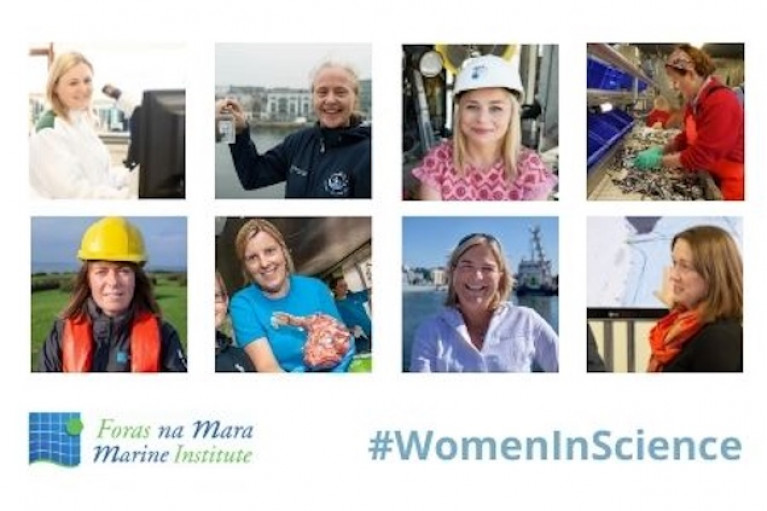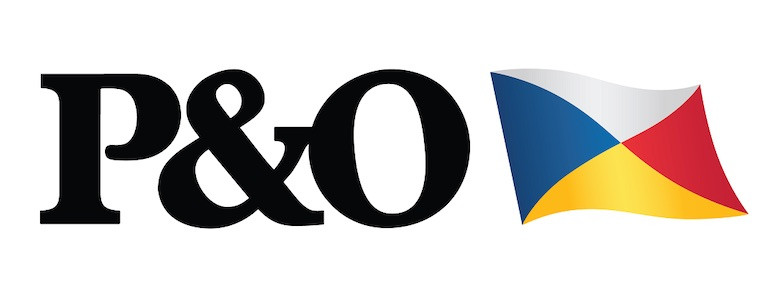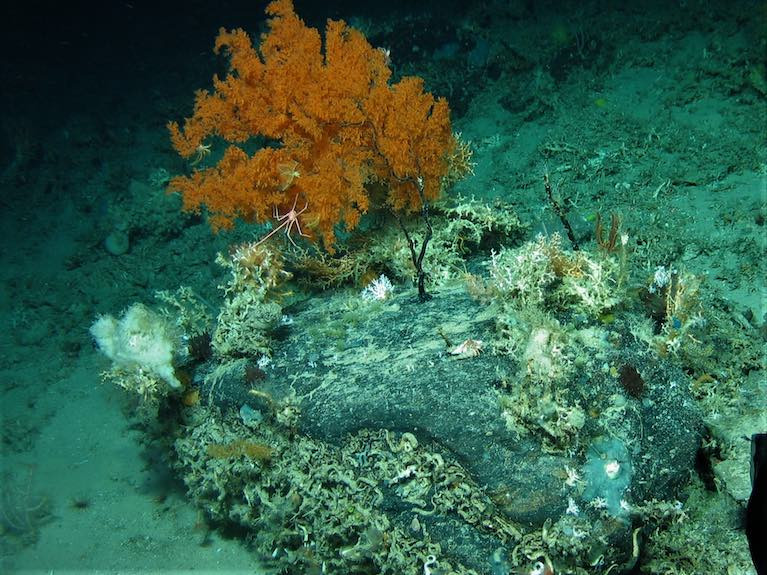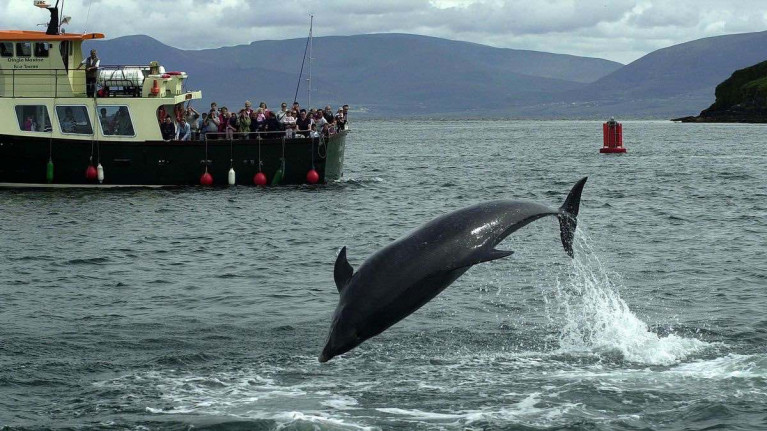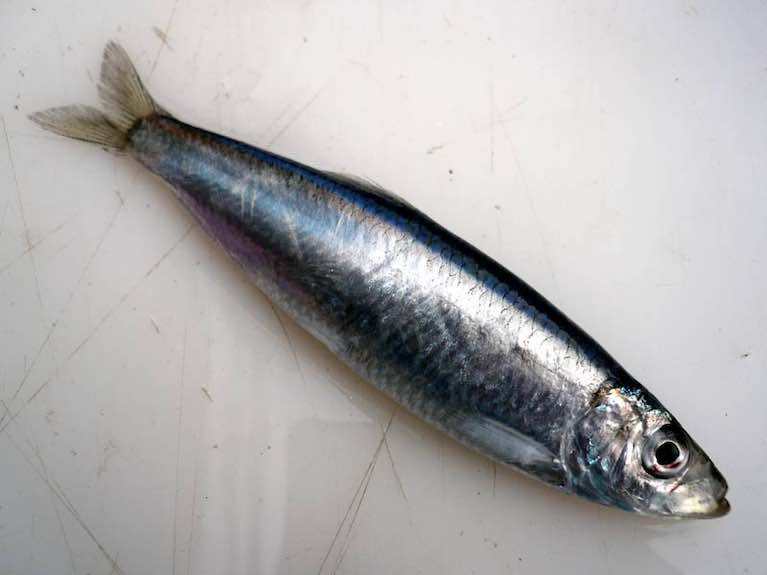Displaying items by tag: marine science
Marine Biologist Maude Delap Was on Shortlist for New Research Ship Name
Marine biologist Maude Delap had been a favoured name among Marine Institute staff when suggestions were being sought last year for a title for the State’s new research ship.
As Afloat revealed last month, renowned polar explorer Tom Crean of Annascaul, Co Kerry, won out, and the 52.8-metre ship will sail into Irish waters under his name after it is completed next summer.
As Times.ie reports today, coincidentally, Delap, who died in 1953, spent much of her life in Crean’s home county of Kerry.
Born in Donegal, she lived on Valentia Island, Co Kerry, from the age of eight as her father was Church of Ireland rector there.
Both Maude and her sister Constance collected marine specimens – many in Dublin’s Natural History Museum. Maude took an interest in jellyfish and pioneered breeding them in captivity.
Her father opposed an offer made to her to work at the Plymouth Marine Biological Association as he is reputed to have said “no daughter of mine will leave home, except as a married woman”.
She was made an associate of the Linnaen Society of London in honour of her work, and had a sea anemone named after her- and she is also remembered by a plaque on Valentia island.
Her name was one of several proposed for the Irish research ship - with the Marine Institute keen to avoid the experience of Britain’s Natural Environment Research Council.
It had been landed with Boaty McBoatface when it sought the public’s opinion on a name for its new polar research vessel several years ago – but opted for RSS Sir David Attenborough.
Tom Crean’s name was confirmed by Minister for Marine Charlie McConalogue earlier this month.
He said Crean’s name on the ship would acknowledge the role of the legendary Irish seaman and explorer who sailed with Sir Ernest Shackleton.
Crean’s three major groundbreaking expeditions to the Antarctic in the early years of the 20th century sought to increase scientific knowledge and to explore unreached areas of the world, at that time, the Marine Institute has noted.
Crean’s family has welcomed the choice, and the Marine Institute said in a statement that several candidate names were shortlisted, “many of which had compelling reasons for selection”.
“These included names such as RV Tom Crean, RV Celtic Discovery, RV Celtic Odyssey, and RV Maude Delap,” it confirmed.
The ship is intended to replace one of two existing marine research ships based in Galway, the 31m RV Celtic Voyager.
Read more on Times.ie here
Female Marine Scientists on the Crest of a Research Wave
Some 30 per cent of researchers worldwide are female, according to UNESCO which marks International Day of Women and Girls in Science this week
About 35 per cent of all students in STEM-related fields – that’s science, technology, engineering and maths – are women, UNESCO says.
However, about 51 per cent of staff at the Marine Institute in Galway are female, and about 70 per cent hold key roles in science, technical analysis and research, extending from oceanography and ocean climate to fishery ecosystems, marine environment and food safety.
Marine Institute director of corporate services Patricia Orme says the organisation also has women working in policy, innovation and research, maritime development and corporate roles.
“We are extremely proud to note that 80% of our female employees hold bachelor, masters or doctorate level qualifications," she says.
Wavelengths spoke to three of those women – starting with postdoctoral researcher Julia Calderwood who is involved in designing what will be a very useful app for the fishing industry to help reduced unwanted catches as part of the IFish project funded by Science Foundation Ireland.
 lizabeth Tray, from North Carolina, is team leader for data co-ordination and reporting on marine spatial planning
lizabeth Tray, from North Carolina, is team leader for data co-ordination and reporting on marine spatial planning
Elizabeth Tray, from North Carolina, is team leader for data coordination and reporting on marine spatial planning and the EU’s Marine Strategy Framework Directive.
Yvonne Bogan from Donegal took her PhD in marine biotoxins and formerly worked with the Environmental Protection Agency. She is now quality manager team leader with the Marine Institute.
 Yvonne Bogan, a quality manager team leader with the Marine Institute
Yvonne Bogan, a quality manager team leader with the Marine Institute
For more profiles of female scientists in marine research, follow #WomenInScience on the Marine Institute’s Facebook, Twitter and Instagram pages.
You can listen to Wavelengths below
Marine Institute Celebrates Women in Science
The Marine Institute is celebrating the International Day of Women and Girls in Science on 11th February 2021, by highlighting the many brilliant women who play transformative and ambitious roles in understanding, exploring, protecting and sustainably managing the wealth of our oceans.
"The Marine Institute recognises our people as a critical enabler of success, and we are committed to supporting a diverse workforce and a culture of high performance driven by our people. Just as the ocean supports a great diversity of life and ecosystems, the Marine Institute values our diverse workforce," said Patricia Orme, Director of Corporate Services at the Marine Institute.
The Marine Institute has a staff of 234 employees, and supports a strong workforce of female employees at 51%. The organisation continues to recognise that its employees’ skills, experience, diversity and passion for the marine are central to the work that is undertaken for the government and other partners.
"Almost 70% of the women working at the Marine Institute work in roles that deliver key services centred around science, technical analysis and research including areas of oceanography & ocean climate, fisheries ecosystems and advisory roles, marine environment and food safety and the development of applications. We also have women working in policy, innovation and research, maritime development and corporate roles. We are extremely proud to note that 80% of our female employees hold bachelor, masters or doctorate level qualifications," Patricia Orme added.
From the 8th – 12th February 2021, the Marine Institute will share photos, animations and profiles of female scientists, sharing their study and career paths, the work they do at the Marine Institute and the important contribution their work delivers. Follow #WomenInScience on the Marine Institute’s Facebook, Twitter and Instagram to meet some of our female scientists, learn about their work and their many successes.
The International Day of Women and Girls in Science Forum has been one of the flagship events of the United Nations, since its inception in 2016. It is a key event for women and girls in science, science experts, policy-makers and diplomats to share their vision, expertise and best practices to achieve internationally agreed development goals, including the 2030 Agenda for Sustainable Development. According to data from the UN Scientific Education and Cultural Organization (UNESCO), 30% of researchers worldwide are women and approximately 35% of all students in STEM-related fields in higher education are women.
Marine Scientist Inspired by Torrey Canyon Disaster is Honoured in New Oxford Dictionary
The work of a marine scientist and conservationist who pioneered a response to the Torrey Canyon supertanker environmental disaster of 1967 has been marked by the Oxford Dictionary of National Biography.
The late Stella Turk, a leading expert on molluscs on the British and Irish coasts, is among 241 people to have been acknowledged as history “shapers” in the publication’s new edition.
Turk ( née Phillips) was born in St Mary’s on the Scilly isles in 1925, and developed an interest in natural history from a young age. After she married Frank Archibald Turk, a conchologist and marine life expert, she further developed her expertise on the Cornish coast.
The Oxford Dictionary of National Biography entry records how the Torrey Canyon disaster of March 1967 had an enormous influence on her work
The supertanker struck a reef between Cornwall and Scilly and leaked some 30 million gallons of crude oil into the sea, polluting a large section of the Cornish coast.
Turk observed that “the rock pools were stripped bare” , and pointed out that quantifying the losses was made difficult by a lack of records of the pre-existing flora and fauna.
“ This seems to have focused the Turks even more sharply on the task of surveying and compiling lists of biological records for the county, continuing their extensive fieldwork, and corresponding with numerous national experts for assistance in specialist groups,” the Oxford publication says.
Turk founded the Cornish Biological Records Unit, which for many years she ran from her home in Reskadinnick, and later worked closely with the Cornish Wildlife Trust.
From 1990, she pioneered what is now Cornwall Wildlife Trust's Marine Strandings Network, which is of international standing.
In 2019, two years after her death in 2017, a research facility at the University of Exeter's Penryn Campus was named after her.
The Oxford Dictionary of National Biography is the national record of men and women who have shaped British history, worldwide, from prehistory to the year 2017. From January 2021 the dictionary includes biographies of 64,071 individuals, written by over 14,000 contributors.
Marine Technical Co-Ordinator - VACANCY FILLED
This vacancy has been filled - February 1 2021
P&O Maritime Services is a global company providing specialist maritime service solution through ownership, operation and management of a fleet of specialised vessels.
In Ireland, we manage Ireland's Marine Science vessels 'RV Celtic Explorer' and 'RV Celtic Voyager'.
Based in Galway, the Marine Technical Co-Ordinator will be responsible for Technical procurement and assist the Technical Manager with ship and scientific related projects.
Requirements:
- Relevant Bachelor of Engineering qualification or equivalent.
- It would be advantageous to have a minimum of 3 years relevant experience onboard ship as Engineer – preferably having a 2nd Engineer COC.
- Workshop & Fabrication skills plus a working knowledge of CAD / Engineering Drawing.
- Strong negotiation and communication skills.
- A background of working within an asset management role is desirable but not essential.
- Good Computer skills and experience with a computerized PMS / Purchase ordering system.
For a full job description or to apply for this role please send CV and covering letter to [email protected]
New Study Finds Coral in Ireland's Deepest Submarine Canyon Survives Extreme Conditions
Irish cold-water corals can survive in extreme conditions within Ireland’s largest submarine canyon on the Porcupine Bank, a new study has found.
The coral even grows on precipices of high cliffs, and can withstand sea current speed of over 114 centimetres per second, according to the study published today in the science journal Nature.
This is the highest current speed ever recorded in a cold water habitat, according to University College Cork(UCC) scientist Dr Aaron Lim who led the research.
 An example of a 3D reconstruction of a cold-water coral habitat from -750 m water depth at the Porcupine Bank Canyon Photo: Aaron Lim
An example of a 3D reconstruction of a cold-water coral habitat from -750 m water depth at the Porcupine Bank Canyon Photo: Aaron Lim
Dr Lim’s team used the Holland 1 remotely operated vehicle (ROV) on the State research ship Celtic Explorer to explore how coral are living in the Porcupine Bank Canyon which is 3,500 metres deep.
 The Marine Institue's Holland 1 ROV being deployed from the RV Celtic Explorer as it 'holds' the deep sea monitoring system (attached to the front) before descending to the deep sea Photo: Aaron Lim
The Marine Institue's Holland 1 ROV being deployed from the RV Celtic Explorer as it 'holds' the deep sea monitoring system (attached to the front) before descending to the deep sea Photo: Aaron Lim
He was part of the 2018 expedition which explored and mapped the canyon some 320 km west of Kerry, finding it full of cold-water corals forming reefs and mounds which create a rim on the lip of the canyon.
This latest expedition found coral in a range of deep marine settings.
The scientists had to use deep marine monitoring stations and three-dimensional reconstructions as part of the work. .
“These cold-water corals are growing at the very edge of a near-vertical cliff face, in Ireland’s largest submarine canyon some 850 m below the surface in very intense conditions. They’re quite literally living on the edge,” Dr Lim said.
 UCC's deep sea monitoring system at the edge of the submarine canyon where it collects marine environmental data for months at a time
UCC's deep sea monitoring system at the edge of the submarine canyon where it collects marine environmental data for months at a time
As he explained, cold-water corals help to form deep-water reefs and mounds which can range from as little as ten metres to over 100 m high.
Some coral mounds have existed offshore Ireland for 2.6 million years, he said.
“Some of these habitats were predominantly alive, while others were mostly dead and so the aim of the study was to understand what is driving this?” Dr Lim said.
UCC marine geologist Luke O’Reilly described the canyon as “a strange-place; deep, dark and cold but full of life”.
“Together with the Marine Institute, we developed a monitoring system which could withstand these pressures and conditions for months at a time,” O’Reilly said.
Prof Andy Wheeler, head of UCC’s school of biological, earth and environmental sciences, noted that the coral can cope with the strong sea currents, but tend to feed when it slows down – such as when the tide turns.
The team have recently deployed monitoring stations in the canyon to gather information on survival over longer time scales.
The research was funded by Science Foundation Ireland and Horizon 2020, with co-funding by the Marine Institute and Geological Survey, Ireland. Shiptime was funded by the Marine Institute's National Shiptime Programme.
The study is published here
TCD Researchers Leading €10.4m 4-Oceans Project
Two researchers from Trinity College, Dublin (TCD) are among leaders of a €10.4 million project to assess the significance of marine resource exploitation over the past 2,000 years.
Archaeology, history and environmental science experts will collaborate in the “4-Oceans” project, funded by the European Research Council.
It has been billed as the “first-ever globalised evaluation” of the role of marine resources on human societies over two millennia.
TCD professor of environmental history Poul Holm and assistant professor of medieval environmental history Francis Ludlow are among a four-strong team of principal investigators.
This project combines expertise in marine environmental history, climate history, natural history, geography, historical ecology and zooarchaeology - spanning the humanities, natural sciences and social sciences.
Working with Prof Holm and Prof Ludlow as project leaders will be University of Cambridge medieval archaeology expert James H Barrett and NOVA University, Lisbon assistant professor Cristina Brito.
Prof Holm said the €10.4 million grant would facilitate “an unparalleled understanding of humanity’s recent interactions with the oceans”.
“Specifically, combining history and archaeology with marine science and socioeconomics, the 4-Oceans team will examine when and where marine exploitation was of significance to human society,”he said.
It would also explore “how major socio-economic, cultural, and environmental forces variously constrained and enabled marine exploitation”.
It would also research “the consequences of marine resource exploitation for societal development”, he said.
His colleague, Prof Ludlow said that “long-term data and an understanding of changes in ecosystems and human behaviour over many centuries is critical to informing the continued development of the UN’s Sustainable Development Goals and the Decade for the Oceans”.
So far, the historical dimension has been missing from this, he said, and the 4-Oceans project would “introduce much-needed chronological depth... through the understanding of our past”, he said.
Professors Holm and Ludlow will oversee €5.4 million of the €10.4 million research funding total allocated to 4-Oceans.
So far, TCD researchers have secured 37 European Research Council investigator grants to the value of about 68 million euro during the course of the EU’s Horizon 2020 framework for research and innovation, which is worth nearly €80 billion in total over six years.
TCD Provost Dr Patrick Prendergast welcomed the securing of the latest award.
As hopes fade of Fungie’s return to Dingle, research suggests that “missing” dolphins are more likely to have migrated than died.
Dolphins in the Shannon estuary which were initially presumed to have perished had in fact moved to nearby bays, according to research published by the Irish Whale and Dolphin Group (IWDG).
The study by Kim Ellen Ludwig of Galway-Mayo Institute of Technology (GMIT) found that the “missing” dolphins had “emigrated” to Tralee and Brandon bays in Kerry, south of the Shannon estuary.
The Shannon estuary’s population of around 140 dolphins provided a good sample for the study, which Ms Ludwig conducted in collaboration with the IWDG.
The IWDG – a registered charity founded by Dr Simon Berrow in 1990 - has been monitoring the Shannon bottlenose dolphins since 1993. It constitutes the longest running whale or dolphin study in Ireland.
The group recently explored its 27-year old identification dataset to see if it could answer the question as to when to consider a dolphin as “dead” rather than missing.
Dolphins and whales are highly mobile, ranging thousands of kilometres.
Survival of young dolphins or calves is easier to monitor when they are dependent on their mothers for survival and is more difficult when calves are weaned.
The study with Ms Ludwig indicated that survival rate was 95.6% for “well-marked individual dolphins”- which means around 4.4% of adult dolphins die each year.
“For less well-marked individuals, survival increases to 5.8%, due to the higher chance a dolphin is “missed” during surveys,” it says.
The IWDG says that Ms Ludwig’s work highlights “a really important confounding factor, that of emigration outside the Shannon estuary to adjacent Tralee and Brandon bays”.
The dolphins had been presumed dead as these two bays are not routinely sampled during monitoring surveys.
Only by extending their surveys, did the IWDG realise that the dolphins were alive and well, and had extended their range.
Scientists with the IWDG are now recommending that the boundary of the lower river Shannon special area of conservation be extended to protect the important habitats of the bottlenose dolphins.
The group also suggests the area could be designated as a marine protected area as an alternative strategy.
In relation to Fungie, estimated to be 37 years old, the IWDG says that “as the time increases without a sighting and the search effort continues", it is "more likely" that he is dead rather than just simply missing.
However “his legacy will live on for years”, it says.
Marine Minister Confirms Funding for New Marine Research Vessel
Minister for Agriculture, Food and the Marine, Charlie McConalogue T.D., has earmarked the purchase of a new marine research vessel for the State in his Department's 2021 Budget.
As Afloat previously reported, €25m was allocated in Tuesday's budget to progress the construction of the vessel.
In making the announcement Minister McConalogue said: "The budget provision will allow the Marine Institute to progress construction on the replacement of the 21-year-old Celtic Voyager with a new 54m modern research vessel that will provide critical national infrastructure to enable Ireland to address the considerable challenges of Brexit and the Common Fisheries Policy as well as climate-induced impacts on our oceans."
 Celtic Voyager - 21 years old and in need of replacement Photo: Bob Bateman
Celtic Voyager - 21 years old and in need of replacement Photo: Bob Bateman
Welcoming the news Dr Paul Connolly, CEO Marine Institute said: "The Marine Institute is delighted that work can continue on the replacement for the Celtic Voyager. This new vessel will enable Ireland to develop the best scientific advice possible to maximise economic opportunities for our coastal industries and communities and ensure a sustainable resource for them".
The construction of the new national research vessel will continue in 2021 with the build process expected to be completed in summer 2022. Spanish shipyard Astilleros Armon Vigo S.A. were awarded the contract to build the new marine research vessel for Ireland last year, following an extensive EU tender process.
Set to be one of the most advanced marine research vessels in the world, Ireland's new marine research vessel will enable Ireland to undertake critical research work to deepen our understanding of our oceans and our natural resources.
The new vessel will be able to go to sea for at least 21 days at a time and will be designed to operate in harsh sea conditions. Based in Galway, the vessel will be used by the Marine Institute, other State agencies and universities to undertake fisheries research, oceanographic and environmental research, seabed mapping and other multidisciplinary surveys. It will also maintain and deploy weather buoys, observational infrastructure and our Remotely Operated Vehicle (ROV Holland I).
The new vessel will be a sister ship to the State's largest research ship, the 65m RV Celtic Explorer and will replace the RV Celtic Voyager. The two Marine Institute research vessels currently in operation (RV Celtic Explorer and RV Celtic Voyager) are among the most intensively used research vessels in the world. The Marine Institute's RV Celtic Voyager is Ireland's first purpose built research vessel. It has been utilised heavily since its delivery 21 years ago and has been vital in providing marine scientists, researchers and its crew members, with many years of valued experience at sea, expanding and strengthening marine science in Ireland to help inform decisions affecting our ocean.
According to Dr Connolly, "The significantly enhanced capabilities of the vessel will help our researchers, educators, students and the public gain a deeper understanding of the ocean. Most importantly it will facilitate work that will support many of the projects outlined in the Programme for Government including fisheries assessment, offshore renewable energy, marine spatial planning, marine protected areas and research in the area of blue carbon."
Capital funding of €1.5m has also been allocated to the Marine Institute in Budget 2021, and funding for national research investment in marine-related activities will align with the Programme for Government and the needs of decision-makers.
Speaking about the additional funding announced in Budget 2021 Dr Connolly, said that "Research investments will add value to the core services provided by the Marine Institute to their national and international clients, including the Department of Agriculture, Food and the Marine. This new research data and knowledge will strengthen our scientific and technical advice to better inform decision-making on the sustainable management of our ocean and seas".
In 2021, the Marine Institute plans to fund a call for a large-scale project for researchers to investigate the potential for carbon storage and sequestration in Irish waters. This was highlighted as an important priority area for the Marine Institute in the Programme for Government. The work will examine a range of potential carbon storage alternatives such as algal absorption, seagrass forestry, deep-sea sinks, seabed layering and shellfish farming.
In welcoming the research expenditure allocations announced in Budget 2021, The Minister of State at the Department of Agriculture, Food and the Marine, Martin Heydon, T.D. said that "If we are going to continue to deliver efficiency and sustainability in the years ahead, innovation will be critical". The Minister also pointed out that the combined investment in Research and Innovation by the Department, Teagasc and the Marine Institute is now over €60m annually.
Calls for Ministerial Action & for Scientific Studies after High Court Ruling on Trawling Ban by Larger Vessels Inside 6 Nautical Miles
The Irish Wildlife Trust (IWT) has called on Minister for Marine Charlie McConalogue and Minister of State for Biodiversity Pippa Hackett to “act swiftly” over a High Court decision that overturns a ban on fishing by vessels over 18 metres long inside the six nautical mile limit.
The Irish Whale and Dolphin Group (IWDG) has also called for a scientific study of species including sprat stocks in inshore waters.
A High Court judgment published last week found that the ban on trawling or fishing within seine nets by vessels over 18 metres in length inside the six-mile nautical limit has “no legal effect”.
Mr Justice Michael McGrath issued his judgment on foot of a judicial review of the ban which was introduced by former marine minister Michael Creed in March 2019.
The judicial review of the policy directive was taken by fishermen Tom Kennedy and Neil Minihane.
IWT campaign officer Pádraic Fogarty said that the original ban was initiated “after a public consultation in 2018 which was roundly supported by low-impact fishers in smaller boats, anglers, environmental groups and members of the public”.
“It was heralded at the time as the single most important move to protect fisheries and marine biodiversity that we have seen. There is consequently widespread anger and dismay that this has now been undone,” Mr Fogarty said in a statement.
“We’re urging ministers Hackett and McConalogue to act swiftly on this High Court decision and to tell us how the trawling ban can be reinstated on a permanent basis,” he said.
“ Until then we need to see all inshore trawling shut down so that any recovery in marine life which may have been underway is not completely undone,” Mr Fogarty said.
The IWT says that trawling for small fish such as sprat “removes the principle food source for sea life, whether its whales, dolphins or larger fish”.
“Bottom trawling, which scrapes a net across the seafloor, obliterates important habitats for fish spawning and should be phased out across our seas,” it says.
IWDG co-ordinator Dr Simon Berrow said that while he did not want to comment directly on the judgment, it was time for a “proper, robust scientific study” on sprat stocks.
“We know so little about sprat,” Dr Berrow told RTÉ Radio 1’s Seascapes on Friday night, pointing out how important the species is for whales.
The six-mile ban for larger vessels was introduced by Minister Michael Creed on 5th March 2019, and came into force on January 1st of this year.
The directive did give a derogation for fishing sprat within six nautical miles up to December 2021, “subject to any catch limits as may be determined by the minister from time to time”.
The Irish South and West Fish Producers Organisation (ISWFPO) has welcomed the judgment. Its chief executive Patrick Murphy said that “once again, we see flawed legislation being overturned in our High Court “.
“The view of IS&WFPO members remains that only a small proportion of fishing boats in our tiny Irish fishing fleet of 165 vessels of over 18 meters in length actually fish inside of the six-mile limit,” he said.
Mr Murphy concurred with the IWDG in calling for a scientific evaluation to calculate the biomass of all commercial stocks within the six-mile zone.
“Until this assessment is complete, we submit that no total allowable quota figure should be set for this important fishery,” he said.



























